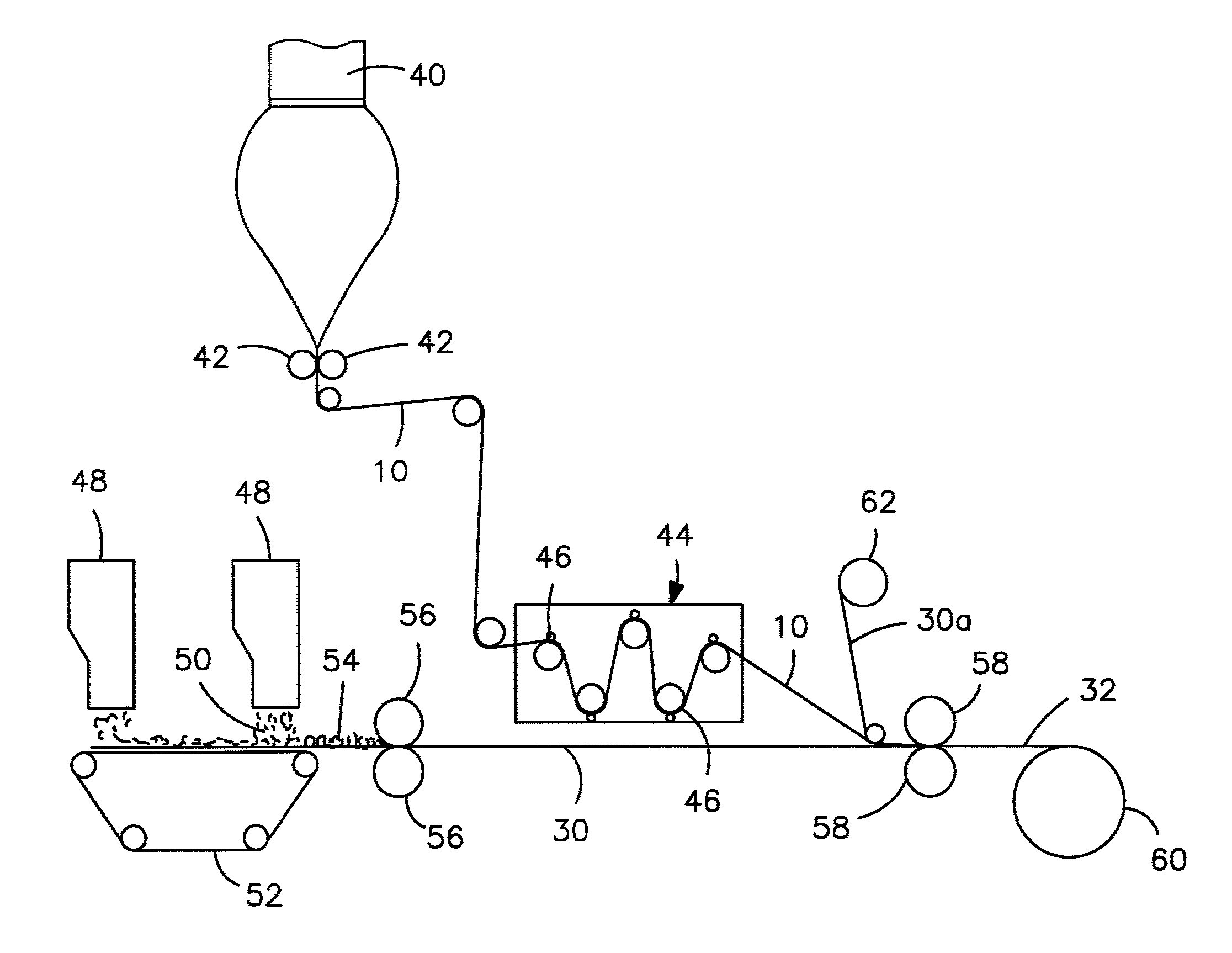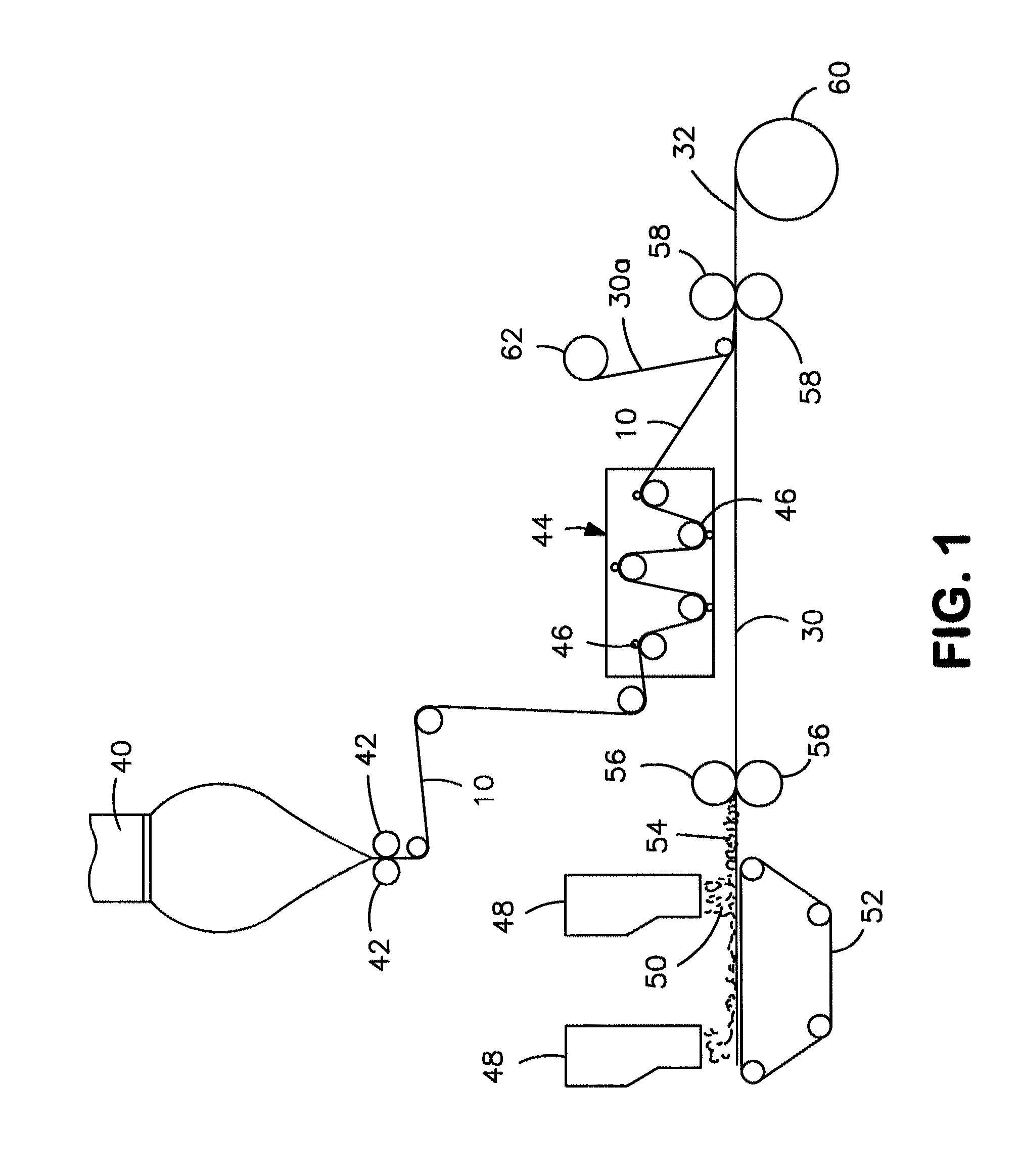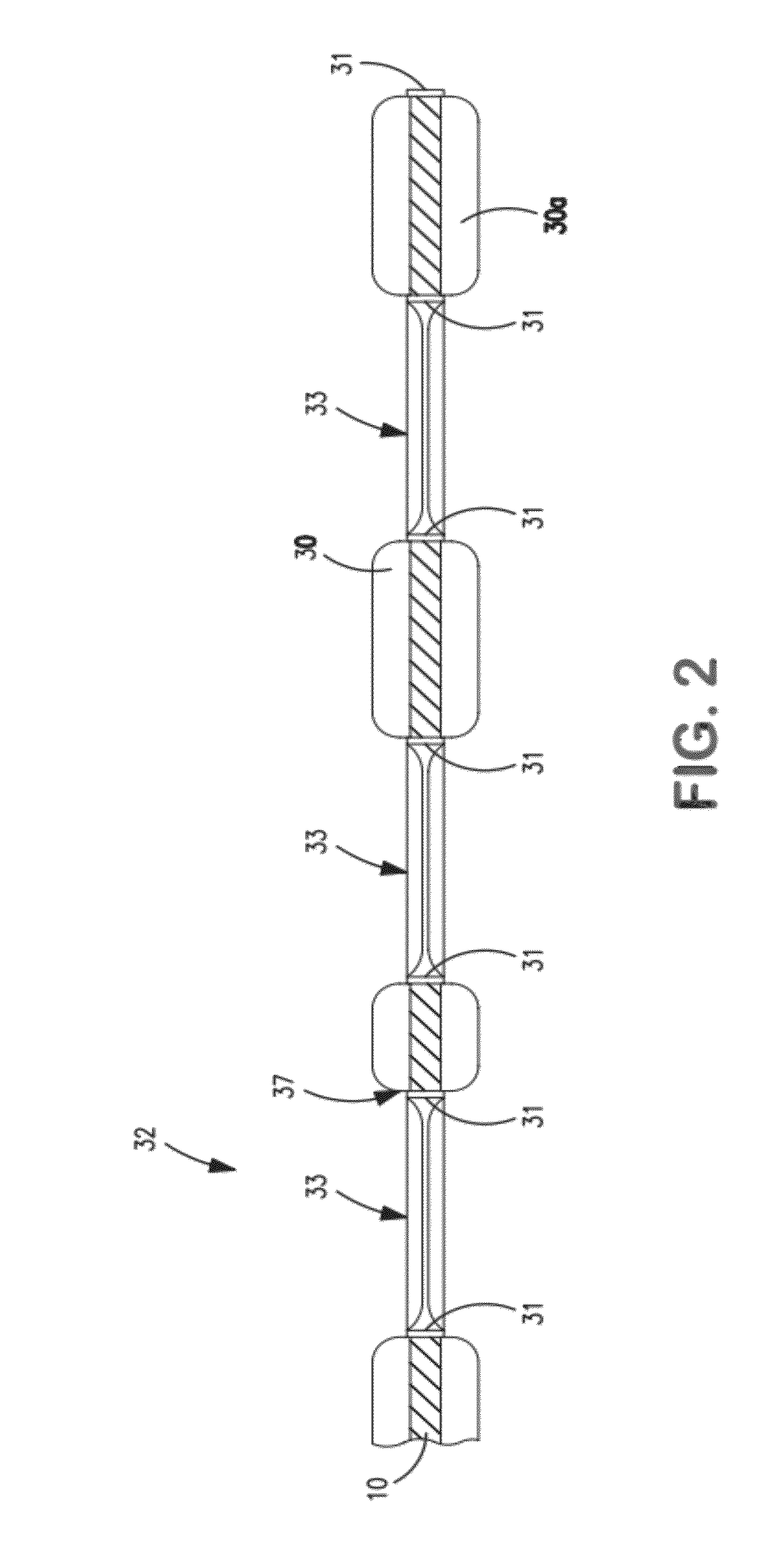Printable elastic composite
a technology of elastic composites and elastic strips, applied in the field of printing elastic strips, can solve the problems of reducing the surface area available for printing, irregular frequency and amplitude of pleats, and reducing print quality
- Summary
- Abstract
- Description
- Claims
- Application Information
AI Technical Summary
Benefits of technology
Problems solved by technology
Method used
Image
Examples
example
[0083]The ability to form a printable elastic composite in accordance with the present invention was demonstrated. The film of the composite was a single layer film composed of 98 wt. % VISTAMAXX™ 1100 and 2 wt. % titanium dioxide concentrate (TiO2 in polyethylene)available from Standridge Color Corp. under the designation “SCC 116921.” The film was cast at a speed of 50 ft / min on a primary casting roll, quenched, and transferred to a set of fixed S-wrap rollers operating at a speed of 50 ft / min. The film was then drawn under tension from the S-wrap to a thermal bonding calender stack at a draw ratio of 4.5× (225 ft / min at calender). The tensioned film was combined in the calender stack nip with a meltblown facing (upper side) and a spunbond facing (lower side), both of which were unwound at a speed of 225 ft / min. The spunbond facing had a basis weight of 13.6 gsm and was composed of 98 wt. % polypropylene (STF 315, ExxonMobil) and 2 wt. % TiO2. The meltblown facing had a basis weig...
PUM
| Property | Measurement | Unit |
|---|---|---|
| temperature | aaaaa | aaaaa |
| diameter | aaaaa | aaaaa |
| diameters | aaaaa | aaaaa |
Abstract
Description
Claims
Application Information
 Login to View More
Login to View More - R&D
- Intellectual Property
- Life Sciences
- Materials
- Tech Scout
- Unparalleled Data Quality
- Higher Quality Content
- 60% Fewer Hallucinations
Browse by: Latest US Patents, China's latest patents, Technical Efficacy Thesaurus, Application Domain, Technology Topic, Popular Technical Reports.
© 2025 PatSnap. All rights reserved.Legal|Privacy policy|Modern Slavery Act Transparency Statement|Sitemap|About US| Contact US: help@patsnap.com



